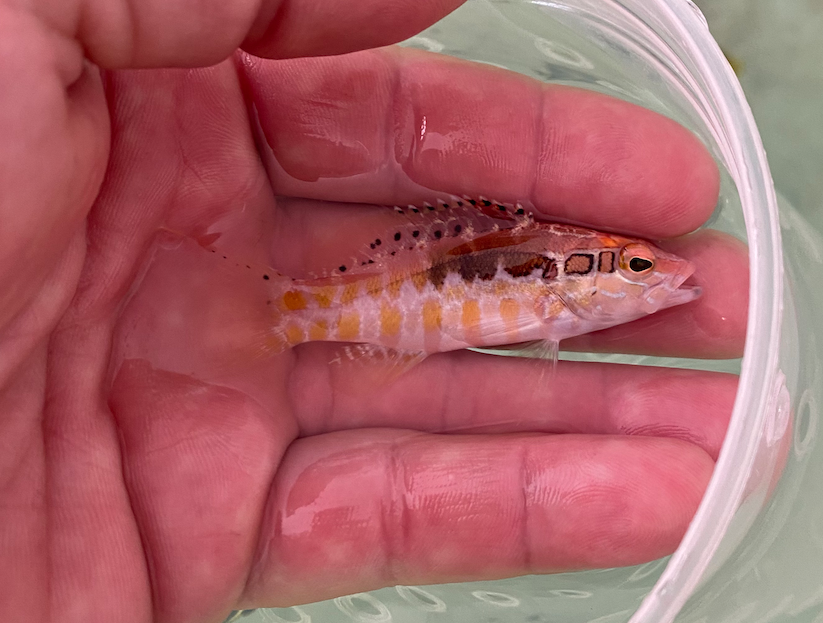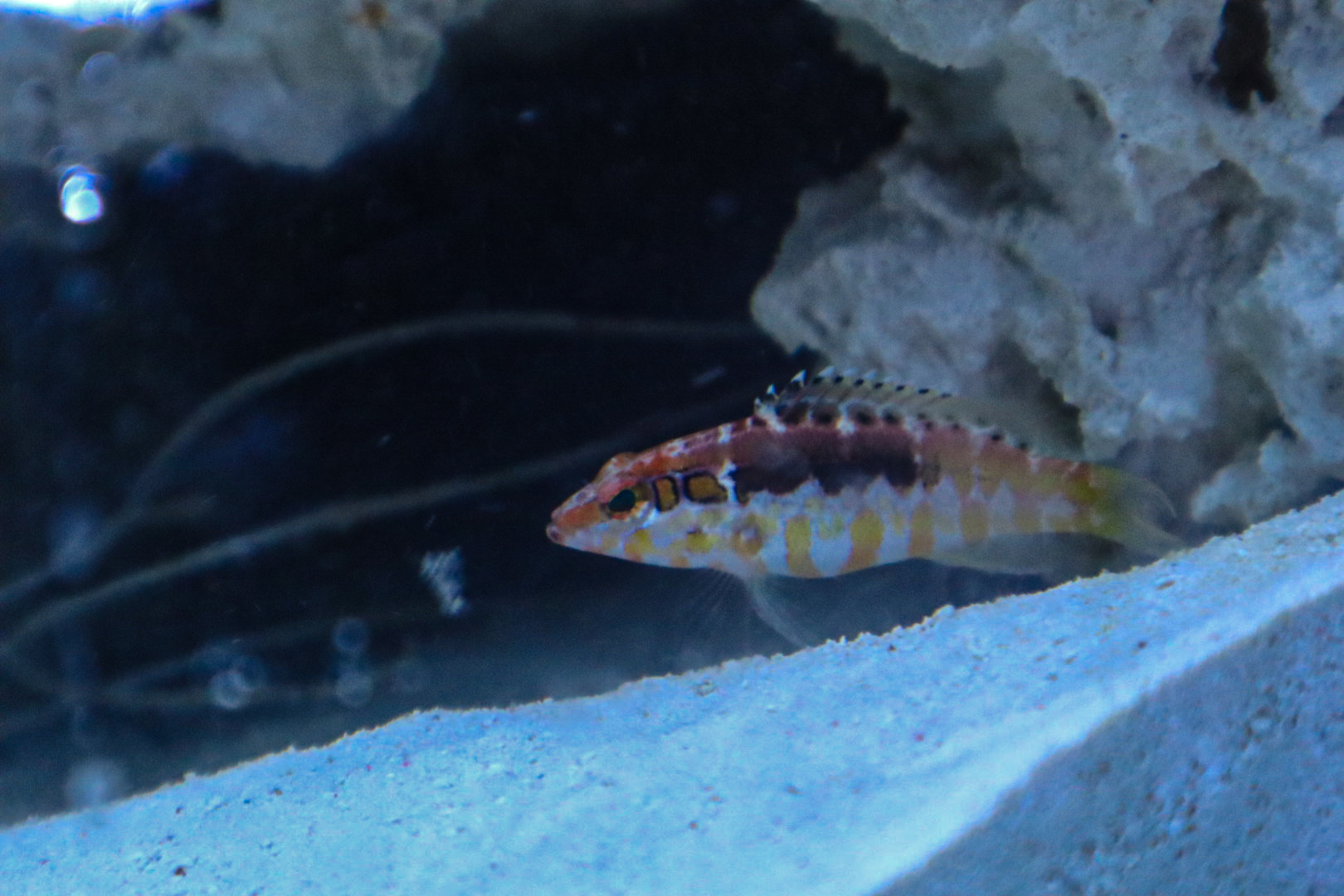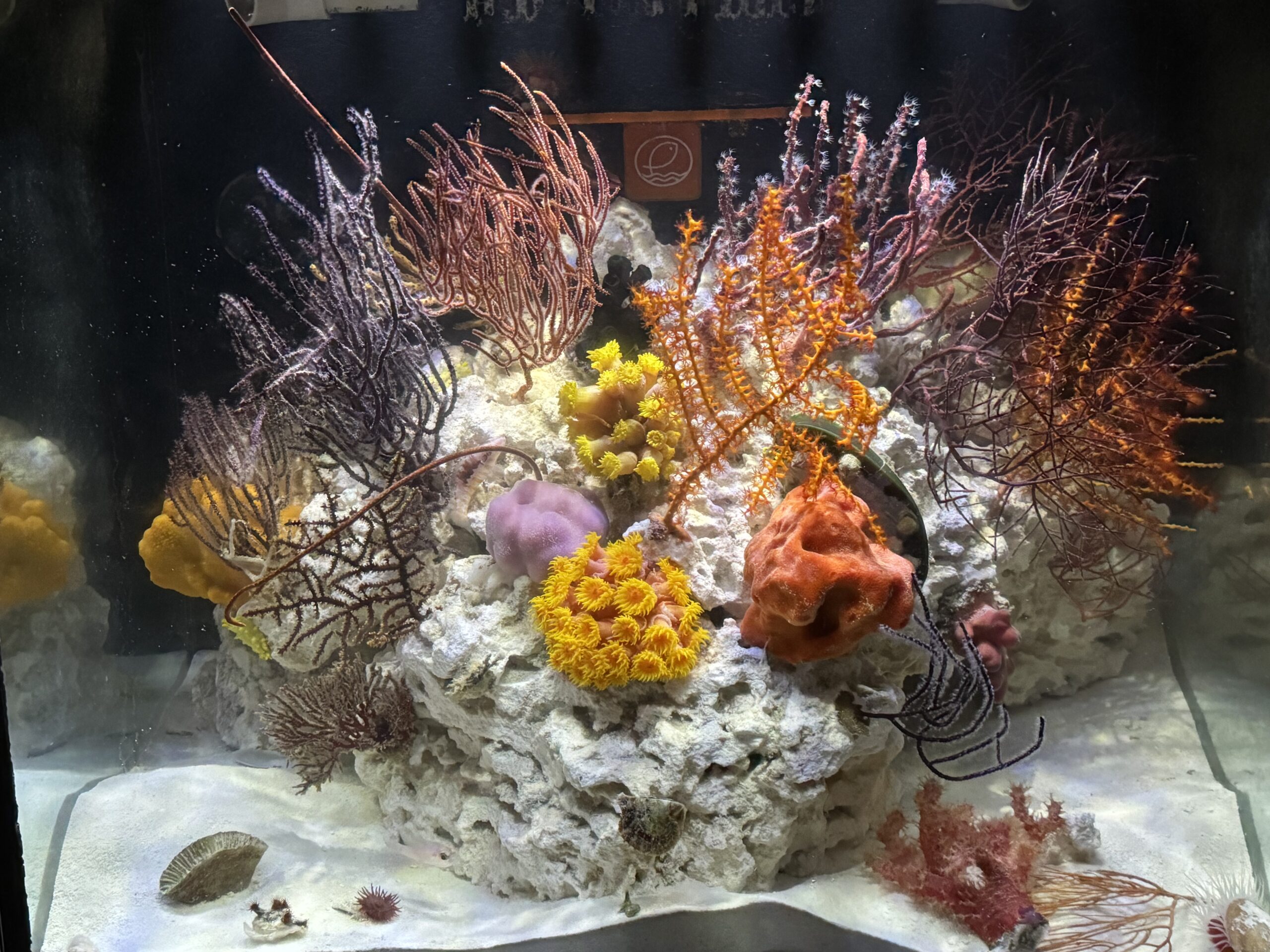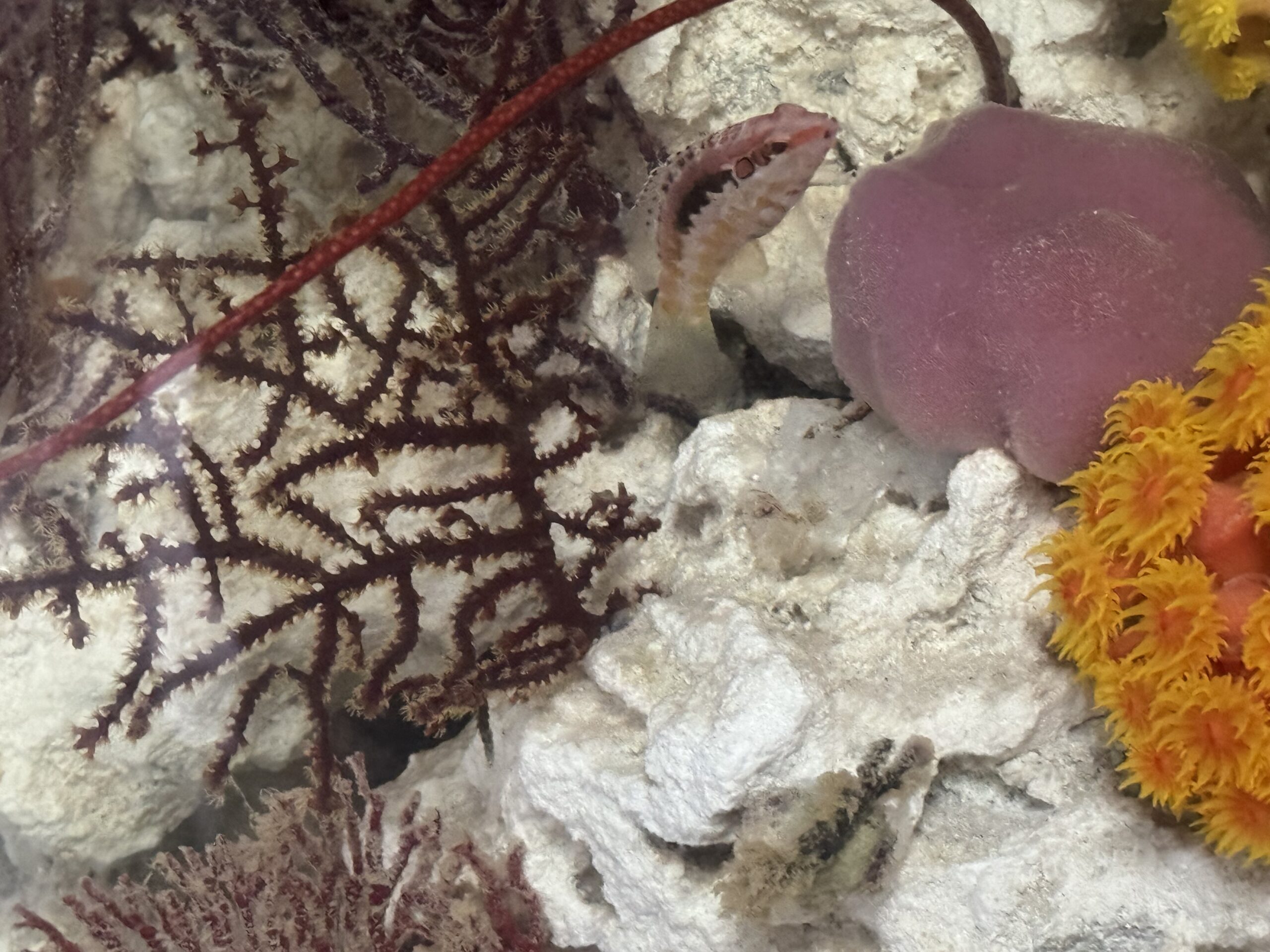Ah, the odd Orangeback Bass, Serranus annularis…let’s take some time and explore this species. Some may mistake this fish for its close relative the Lantern Bass, but the Orangeback Bass is a unique Caribbean fish that is not seen very often in the aquarium trade. This beautiful specimen belongs to the Serranus genus. It can be differentiated from the Lantern Bass by its orange “dots” behind its eye. This genus also includes Lantern Bass, Harlequin Bass, Tobacco Bass, Chalk Bass, Snowy Bass, and many more. Furthermore, the Orangeback Bass can be found throughout most of the Caribbean on deeper reefs usually below a hundred feet.
If you are a collector of unique marine life, the Orangeback Bass can be a notable alternative to many of its more common relatives that are readily available in the hobby. This species can be hard to acquire as it is not all that commonly collected. However, this could potentially be because some divers look over or don’t pay much attention to them; it could also be that this species isn’t as “popular” in the hobby which generally makes it less sought after by divers.

Collecting this species can be quite difficult though due to the depth and habitat that they live in. I have had the privilege of speaking to at least one diver who collects these, and he mentioned that they come from deeper reefs ranging from a hundred feet to about a hundred and forty feet. This diver also mentioned that they are found in areas with lots of possibilities to take quick cover when approached, like behind sponges and in small crevices such as ledges and caves. It can be noted that most of the time, these specimens are found singly or in pairs, but some divers have reported observing them in small groups. Therefore, keep in mind that these factors all play a role in the price of this fish, and they average anywhere from $50 to $200. Some retailers have also offered these specimens in pairs which obviously, causes a spike in the price!
Orangeback Basses may be expensive, but they are super easy to keep! They may be easy to keep, but keep in mind that these fish may eat smaller fish and invertebrates. If the hobbyist understands that and plans accordingly, these fish can make a great addition to biotope and fish-only aquariums as well as reef tanks with larger fish. They tend to adapt to eating frozen food rather quickly which is a positive point to keeping them in your tank.

I feed my specimens a mixture of krill, Mysis, and live saltwater ghost shrimp. They do have a high metabolism so feeding at least once a day is a strong recommendation from me.
Tank size
If I were to give a recommendation on tank size for these fellas, I would say about forty gallons or more. As a general rule, I would recommend keeping them singly or in pairs as maintaining a group may be difficult to achieve in an average aquarium due to space and their tendency to become territorial. Selecting tank mates for them can be tricky simply because they will eat whatever they can fit in their mouth. I would personally not recommend adding other species in the Serranus genus as attempting to add other species in this genus could cause some aggression against one another. The most important part of picking tank mates for this species is to just make sure the Orangeback Basses won’t be able to consume them. For reference, Orangeback Basses generally reach an average of three to four inches in length.

Creating a biotope for this species can be quite fun as well. This species comes from deeper waters so a medium-lit caribbean NPS tank would best mimic its environment. Sponges, gorgonians, rock ledges, and caves will make an ample environment for these fish. If you are looking to add gorgonians, some good choices for a biotope tank would be Swiftia exserta, Diodogorgia nodulifera, and some Ellisella elongata. Sponges can be tricky, but tree sponges and some encrusting sponges can help fill gaps between corals to make the biotope look as close to their environment as possible. Sun corals would be a good LPS coral to add to these tanks to mimic their environment.
One can note that sun corals may not be native to the Caribbean, but they are now a part of their habitat so why not add some to your tank? If you want to add invertebrates to this biotope, I would recommend a larger-sized coral-banded shrimp or a larger Caribbean cleaner shrimp. Anything small has the potential of getting eaten at some point by your fish. Even if you’re not exactly planning a biotope for one of these specimens, just keep these same factors in mind!

Keeping this species in the aquarium can be quite fun! It’s a notable specimen that can add some rarity to your reef. Their sheer color and uniqueness are something to have some respect for and cause hobbyists to desire to add them to their tank or possibly start a new tank and build it around these fish. They are definitely one of my favorite specimens that I have ever kept out of the Caribbean, and they are somewhat rare in the hobby. With that in mind, keep an eye out and add one to your tank, or create a new tank centered just around them!



